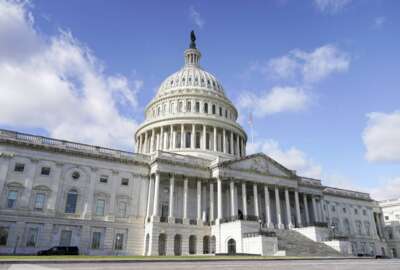Our nightmarish debate is refreshed now by executive decisions from the Trump administration. The constant for the immigration question is that it gets tossed back and forth between sets of equally ineffective presidential orders rather than thoughtful legislation. This might be a great way to deal with problems in a banana republic, but a terrible way for the U.S. to try and solve them.
Illegal entry into the United States originates mainly unseen except by a few. Often it occurs at night, in the dark. It’s never happy, never fun. Occasionally it’s fatal. But it never lets up.
According to Customs and Border Protection, the number of people apprehended while crossing over through Mexico dipped a little in December, but remained at historically high levels. The numbers of individuals apprehended for October, November and December ran 46,164; 47, 214 and 43,272.
I said “through” Mexico because so many aren’t from Mexico. They originate in many corners of the world — Eastern Europe, Asia, South America. But as America gave out candy on Halloween, voted for President, enjoyed Thanksgiving turkey, and celebrated Christmas and Hanukkah, 136,670 people were apprehended on the Southwest border by a very hard-working cadre of CBP agents. That’s 60 people an hour.
Why do they come? Probably you’d find as many reasons as people. Some come for economic opportunity, liberation from crime, terror or poverty. Some flee religious or other forms of political persecution. But others come precisely for the purposes of crime, terror or subterfuge.
President Donald Trump has started to reverse the policies of his predecessor Barack Obama for illegal immigration He did so at Homeland Security headquarters the other day in a highly visible manner. I darn near got stuck by the motorcade, but luckily got through Ward Circle in Northwest D.C. just in time.
The earlier catch-and-release policy was aimed at detaining the bad people, but sending those deemed not a danger into the U.S., presumably to appear before a judge at some future date. It is at this point things break down, leading to our remarkably bitter and enduring national debate about immigration and what to do with and about the millions of people here illegally. I don’t know what the answer is, but you can’t send everyone back, nor can you let everyone stay. Somehow both Obama and Trump’s orders seem aimed at trying to find a balance in the absence of updated immigration law.
Having the political shoe on the other foot surely switches which side of the stadium is cheering. But solving these deep questions as if they’re a political football game doesn’t produce long-lasting solutions most people can live with. By that criterion, neither Obama nor Trump’s executive order on immigration really works. In fact, the absence of intelligent debate in Congress and the consequent absence of legislation that can get enough support from both parties leads to this ceaseless toggling between presidential orders.
I think most regular people see and understand the nuances better than the pols because of what they see and hear around them daily. We encounter immigrants so regularly we hardly notice. Saturday mornings I stop for coffee at a 7-Eleven. Balbir, a turbaned Sikh from India, usually mans the cash register. He’s become a friendly acquaintance in the way people you see regularly but briefly somehow do. I’ve interviewed countless federal executives and contractor experts who originated somewhere else but are helping design supercomputers, market enterprise software, or analyze cybersecurity trends.
I also know an El Salvadoran who, two years ago, became a naturalized U.S. citizen. The institution at which he works acknowledged the occasion in a public ceremony at which I unfurled and handed him a flag that had flown over the U.S. Capitol. Until you’ve handed someone such a flag — and I have on several occasions — you may not understand the emotional power the U.S. flag can bring, even the little certificate your congressman prints out to accompany it. One naturalized family to whom I presented a flag went out and bought an eagle-tipped flagpole. Now their flag hangs in the living room.
This man is mostly apolitical, but he expressed mild resentment over those who didn’t come legally, didn’t get the green card, didn’t do the admittedly arduous process.
In my interview, Brandon Judd told me the officers feel apprehensions are down in late January because of the Trump change in policy. Judd is president of the National Border Patrol Council, the union representing border patrol agents. The union supported the Trump candidacy. Judd says he’s glad for the White House directive to start building The Wall. He says he believes the drop in crossings is borne of fear of jailing now that the Trump administration as superseded catch-and-release.
Ultimately, walls (virtual or concrete), enforcement action, legal proceedings and all the rest of it only work properly if done consistently and under a legal policy framework the public buys into. Right now that’s not the case. Both parties’ congressional delegations have finished up their respective retreats. I’ll bet you a large 7-Eleven coffee no effective immigration legislation will come out of it.
Copyright
© 2024 Federal News Network. All rights reserved. This website is not intended for users located within the European Economic Area.






